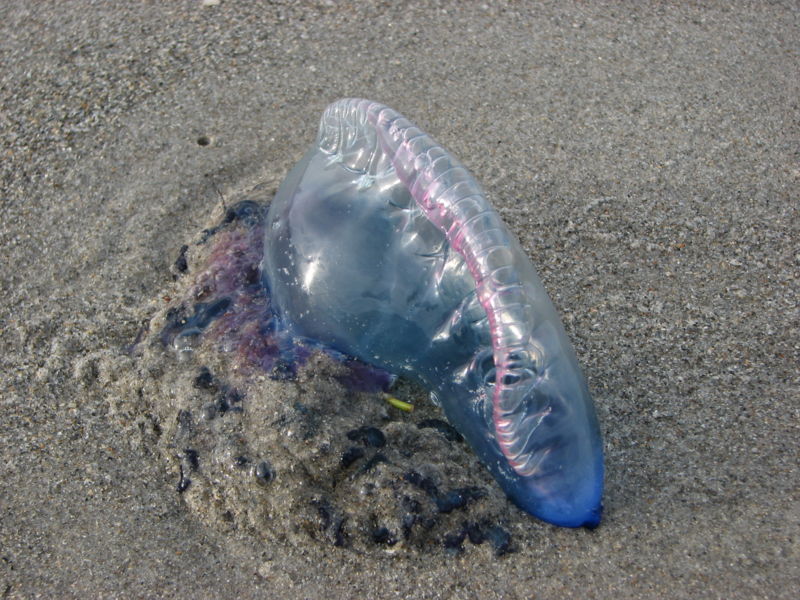Adaptations
The
Portuguese Man of War has developed many adaptations in order to survive in its
marine environment. One such
adaptation is its method of locomotion.
It floats passively on the surface of the ocean and is directed by the
wind, via the pneumatophore, and the current.
The pneumatophore, or float, remains at the surface, dipping below only
to prevent dessication. The float
may be either right or left sided which causes the man of war to drift at an
angle of 45 degrees to the direction of the wind.
This helps to aide in the dispersal of these animals more evenly over the
world’s oceans. In addition to
locomotion, the pneumatophore’s blue and purple coloration provides camouflage
against the background of ocean waves.
Although Physalia lacks the elements of speed or surprise, due to winds and
waves restricting its movements, it has adapted a different method to capture
prey. During hunting, the man of war
will stretch out its stinging tentacles to their full length.
This acts as a floating net in which to catch prey items.
Although mostly transparent, these tentacles posses pigmented regions.
These regions resemble larval fish, small shrimp, or copepods in order to
lure prey into their net of stinging tentacles.
When captured, the tentacles contract and the prey is digested.
